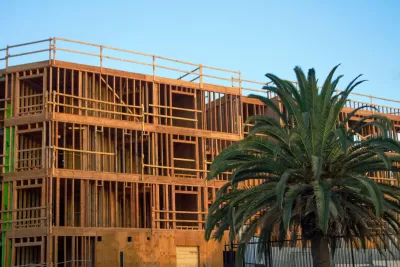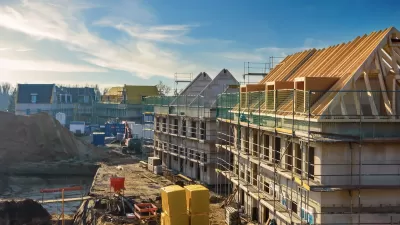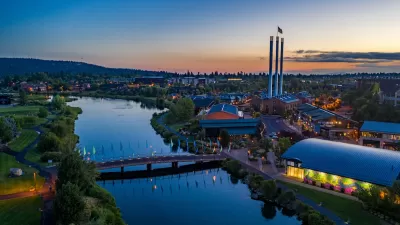It’s been five years since the California Legislature approved Senate Bill 35 to clear hurdles to housing construction. How much of its intentions has the law accomplished, and what should planners look for in the next few years?

The California legislature approved Senate Bill 35 in 2017, with goals to speed up an onerous permitting process and remove traditional obstructions to planning and building multi-family housing projects.
The law is set to sunset in 2026, but a proposed bill, SB 423, would extend and amend the process created by SB 35. Five years, or halfway, into the law’s existing ten-year window, the Terner Center for Housing at the University of California, Berkeley provides an analysis of SB 35’s accomplishments so far. The analysis catalogues and maps 156 projects. Here is how the article explains the findings of the analysis.
Five years in, we find that SB 35 has become the streamlining method of choice among affordable housing developers, who report that the law has made the approval process for new multifamily infill development faster and more certain. Between 2018 and 2021, 156 projects were approved for streamlining or had a pending application, comprising over 18,000 new proposed housing units. Most of these projects are 100 percent affordable developments ( in which all units are designated for households with lower incomes) and most of the projects are located in either the Bay Area or Los Angeles regions.
The source article, linked below, includes an interactive map and an .xlsx file with the list of 156 CB 35 projects. The full report, written by Shazia Manji and Ryan Finnigan, is also available online.
FULL STORY: Findings from the first five years of SB 35

Maui's Vacation Rental Debate Turns Ugly
Verbal attacks, misinformation campaigns and fistfights plague a high-stakes debate to convert thousands of vacation rentals into long-term housing.

Planetizen Federal Action Tracker
A weekly monitor of how Trump’s orders and actions are impacting planners and planning in America.

In Urban Planning, AI Prompting Could be the New Design Thinking
Creativity has long been key to great urban design. What if we see AI as our new creative partner?

King County Supportive Housing Program Offers Hope for Unhoused Residents
The county is taking a ‘Housing First’ approach that prioritizes getting people into housing, then offering wraparound supportive services.

Researchers Use AI to Get Clearer Picture of US Housing
Analysts are using artificial intelligence to supercharge their research by allowing them to comb through data faster. Though these AI tools can be error prone, they save time and housing researchers are optimistic about the future.

Making Shared Micromobility More Inclusive
Cities and shared mobility system operators can do more to include people with disabilities in planning and operations, per a new report.
Urban Design for Planners 1: Software Tools
This six-course series explores essential urban design concepts using open source software and equips planners with the tools they need to participate fully in the urban design process.
Planning for Universal Design
Learn the tools for implementing Universal Design in planning regulations.
planning NEXT
Appalachian Highlands Housing Partners
Mpact (founded as Rail~Volution)
City of Camden Redevelopment Agency
City of Astoria
City of Portland
City of Laramie





























